Rubber Plant (Ficus elastica)
The Rubber Plant, scientifically named Ficus elastica, is a popular houseplant valued for its attractive foliage and relatively easy care requirements. It is native to the tropical regions of Southeast Asia and is a member of the fig family (Moraceae).
Appearance:
– The Rubber Plant features large, glossy, leathery, typically dark green leaves. Some cultivars may have variegated or burgundy-coloured leaves.
– The leaves are oval-shaped with a pointed tip and prominent veins.
– It can grow quite tall indoors, reaching heights of up to 6-10 feet (1.8-3 meters) under optimal conditions.
– The plant’s sap contains latex, where its common name, “Rubber Plant”, originates.
Light Requirements:
Rubber plants prefer bright, indirect light. They can tolerate some direct sunlight, particularly in the morning or evening when the light is less intense, but they can be sensitive to too much direct sunlight, which can scorch their leaves.
Rubber plants generally do best in a location that receives bright, filtered light for most of the day. A north-facing window is often a good location, as it provides bright but indirect light. East- and west-facing windows can also work well, but it’s essential to provide shade during the hottest part of the day to prevent the plant from getting too much direct sunlight.
If you don’t have a location with bright, indirect light, you can still grow a rubber plant using artificial lighting. LED grow lights are a good option, as they provide a full spectrum of light that can be adjusted to mimic natural sunlight. When using grow lights, keeping the light source at the appropriate distance from the plant is essential to avoid burning or stressing the leaves.
It’s worth noting that rubber plants can adapt to lower light conditions, but they may grow more slowly and produce fewer leaves. If your rubber plant is not receiving enough light, you may notice that the leaves are smaller or farther apart on the stem or that the stems are stretching or leaning toward the light source. In this case, you may need to adjust the plant’s location or lighting to provide more light.
Temperature:
Rubber Plants thrive in average to warm temperatures ranging from 60-80°F (15-27°C).
Hardiness Zones:
Rubber plants are native to tropical regions of India and Southeast Asia and typically grow indoors as houseplants. They are not cold-hardy and cannot tolerate freezing temperatures.
Rubber plants are typically grown in hardiness zones 10-12, with average minimum temperatures of 30-40°F (-1 to 4°C) in the winter. In colder regions, rubber plants can be grown as indoor plants or in greenhouses.
If you live in a colder climate and want to grow a rubber plant outdoors, you can grow it in a container that can be moved indoors during winter. Be sure to choose a large container to accommodate the plant’s roots and provide good drainage. Place the container in a bright, sunny location, protected from cold drafts and wind.
Remember to water the plant regularly and fertilize it with a balanced fertilizer during the growing season. Watch for signs of stress or disease, and take action promptly to prevent damage to the plant.
In summary, rubber plants are not cold-hardy and are typically grown in hardiness zones 10-12. If you live in a colder region, you can grow a rubber plant indoors or in a container that can be moved indoors during winter.
Watering:
Rubber plants prefer consistent moisture in their soil but can be sensitive to overwatering. Here are some tips for watering your rubber plant:
1. Check the soil moisture: Before watering your rubber plant, check the soil moisture level by inserting your finger into the soil up (2.5 cm) to the first knuckle. If the soil feels dry, it’s time to water the plant.
2. Water thoroughly: When watering your rubber plant, water it thoroughly until water drains out of the bottom of the pot. This will help ensure the roots get enough moisture and prevent salt buildup in the soil.
3. Allow the soil to dry out slightly: After watering, allow the soil to dry out slightly before watering again. Rubber plants prefer moist soil but can be sensitive to overwatering, which can cause root rot and other problems.
4. Adjust the watering frequency based on the season: Rubber plants may require more frequent watering during the growing season (spring and summer) and less frequent watering during the dormant season (fall and winter). Be sure to adjust your watering schedule accordingly.
5. Use room-temperature water: Use room-temperature water when watering your rubber plant, as cold water can shock the roots and cause damage.
6. Avoid waterlogging the soil: Rubber plants do not like sitting in waterlogged soil, which can suffocate the roots and lead to rot. Ensure the pot has good drainage and that excess water can drain quickly.
Remember that proper watering is important for the health of your rubber plant. Your rubber plant will thrive and grow into a beautiful, healthy indoor plant with consistent moisture and good drainage.
Humidity:
Rubber plants are native to tropical regions and prefer a humid environment. They thrive in high humidity, which can help keep their leaves healthy and prevent pest infestations. Here are some tips for maintaining the proper humidity levels for your rubber plant:
1. Use a humidifier: A humidifier is the easiest and most effective way to increase humidity levels around your rubber plant. You can place a small humidifier near the plant or use a larger one to humidify the entire room.
2. Group plants together: Placing several plants together can create a more humid microclimate than the surrounding air. To increase humidity, you can group your rubber plant with other houseplants or place it on a pebble tray with water.
3. Mist the leaves: You can also mist the leaves of your rubber plant with water to increase humidity. Be sure to use room-temperature water and mist the leaves lightly, as too much water can cause damage or encourage fungal growth.
4. Use a humidity tray: A humidity tray is a shallow tray filled with water that you can place under your rubber plant. As the water evaporates, it will increase the humidity around the plant.
5. Avoid dry air: Rubber plants do not thrive in dry air, so it’s essential to avoid exposing them to central heating or air conditioning that can dry out the air. You can also use a hygrometer to monitor the humidity levels in your home and adjust them as needed.
Maintaining proper humidity levels can help your rubber plant stay healthy and happy, preventing problems such as leaf drop, pest infestations, and leaf browning.
Soil:
The best soil for rubber plants is a well-draining potting mix that is rich in organic matter and provides good aeration for the roots. Here are some tips for choosing the best soil for your rubber plant:
1. Look for a well-draining mix: Rubber plants prefer soil that drains well, as they are susceptible to root rot if the soil stays too wet. Look for a potting mix that contains perlite, vermiculite, or sand to improve drainage.
2. Choose a mix rich in organic matter: Rubber plants benefit from soil rich in organic matter, as it provides essential nutrients and helps retain moisture. Look for a potting mix that contains peat moss, compost, or other organic materials.
3. Avoid heavy soils: Rubber plants do not do well in heavy, compacted soils, as they can suffocate the roots and prevent proper drainage. Avoid soils that contain clay or that are too dense.
4. Consider adding perlite or sand: If you have heavy soil, you can improve drainage by adding perlite or sand to the potting mix. These materials will help to loosen the soil and improve aeration.
5. Use a fresh, sterile mix: To prevent disease and pests, using a fresh, sterile potting mix when repotting your rubber plant is best. Avoid using soil from your garden or reusing old potting mix.
Fertilization:
During the growing season (spring and summer), feed the Rubber Plant every 2-4 weeks using a balanced, water-soluble fertilizer diluted to half the recommended strength. The best fertilizer for rubber plants is a balanced, slow-release fertilizer that contains equal parts of nitrogen, phosphorus, potassium, and other micronutrients. Here’s how to choose and apply fertilizer to your rubber plant:
1. Choose a balanced fertilizer: Look for a fertilizer labelled as “balanced” or “complete” that contains equal parts of nitrogen, phosphorus, and potassium, such as a 10-10-10 or 20-20-20 fertilizer. You can also use an organic fertilizer that is specifically formulated for houseplants.
2. Determine the amount of fertilizer needed: The amount of fertilizer you need will depend on the size of your rubber plant. Generally, use about 1/2 teaspoon of granular fertilizer per 6-inch pot, or follow the manufacturer’s instructions for liquid fertilizer.
3. Apply the fertilizer: Sprinkle the recommended amount evenly over the soil surface with granular fertilizer, then water the plant thoroughly to help it absorb the nutrients. With liquid fertilizer, dilute the recommended amount in water according to the manufacturer’s instructions, then apply directly to the soil or foliage.
4. Fertilize regularly: Rubber plants benefit from regular fertilization during the growing season, typically from spring to fall. Follow the manufacturer’s instructions for application rates and frequency, and avoid over-fertilizing, which can lead to fertilizer burn and other problems.
5. Monitor your plant: Watch your rubber plant closely for signs of over-fertilization, such as yellowing leaves or stunted growth. If you notice any signs of stress, reduce the amount of fertilizer or frequency of application.
Constantly water your rubber plant thoroughly after fertilizing to help it absorb the nutrients. Avoid fertilizing during periods of dormancy or stress, as your plant may not be able to absorb the nutrients effectively. Your rubber plant will thrive and grow into a beautiful, healthy indoor plant with proper fertilisation.
Pruning:
Pruning to maintain their shape, promote healthy growth, and remove damaged or diseased foliage. Here are some tips for pruning rubber plants:
1. Choose the right time: Rubber plants can be pruned at any time of the year, but it’s best to avoid pruning during periods of dormancy or stress, as the plant may not be able to recover as quickly. Spring and summer are generally good times to prune, as this is when the plant is actively growing.
2. Decide which branches to prune: Look for branches that are dead, damaged, or diseased, as well as any branches that are growing in an undesirable direction or interfering with other branches. You can also prune back the top of the plant to control its size and shape.
3. Use sharp, clean pruning tools: Use a pair of sharp, clean pruning shears or scissors to make clean cuts. Avoid tearing or crushing the branches, as this can damage the plant tissue and make it more susceptible to disease.
4. Make the cuts: Make your cuts just above a leaf node or bud, as this will encourage new growth and help the plant to recover quickly. Cut in several stages for larger branches to avoid tearing the bark and damaging the plant.
5. Monitor the plant: After pruning, monitor your rubber plant closely for signs of stress or disease. Water the plant regularly and avoid over-fertilizing or exposing it to extreme temperatures or light conditions.
Remember that pruning should be done in moderation, as excessive pruning can stress the plant and lead to reduced growth or even death. Avoid removing more than 20-30% of the plant at any time, and always use clean, sharp tools to avoid damaging the plant tissue. With proper pruning and care, your rubber plant will thrive and grow into a beautiful, healthy indoor plant.
Propagation:
Rubber plants can be propagated through stem cuttings or air layering. Here are some steps to propagate rubber plants using each method:
1. Propagation by stem cuttings:
– Choose a healthy stem: Select a stem at least 4-6 inches (10-15 cm) long with several leaves attached.
– Cut the stem: Make a clean, diagonal (45-degree) cut just below a leaf node using a sharp, clean pair of scissors or pruning shears.
– Remove the lower leaves: Remove the leaves from the stem’s bottom 2-3 inches.
– Dip the cutting in rooting hormone: Dip the cut end of the stem in rooting hormone powder or liquid to promote root growth.
– Plant the cutting: Plant the cutting in a pot filled with well-draining potting mix and water thoroughly. Cover the pot with a plastic bag or dome to create a humid environment and place it in bright, indirect light.
– Monitor the cutting: Keep the soil moist but not waterlogged, and monitor the cutting for signs of new growth. Once new leaves appear, you can remove the plastic bag or dome and care for the plant like a mature rubber plant.
2. Propagation by air layering:
– Choose a healthy stem: Select a stem that is at least 1/4 inch thick and has several leaves attached.
– Cut: Make a vertical cut about 1 inch long in the stem, just below a leaf node.
– Apply rooting hormone: Apply rooting hormone to the cut area.
– Wrap the cut area: Wrap the cut area with damp sphagnum moss, then wrap it with plastic wrap to hold the moss in place.
– Wait for roots to form: Check the moss periodically to keep it moist. Roots should form in the moss after a few weeks to a few months.
– Remove the rooted section: Once the roots are well-developed, cut the stem below the moss and pot the rooted section in a pot filled with well-draining potting mix. Water thoroughly and care for the plant like a mature rubber plant.
Remember that propagation can take time and patience, but you can properly grow new rubber plants from stem cuttings or air layering.
Dormancy:
Rubber plants (Ficus elastica) do not typically go dormant like deciduous trees and some other plants do. However, they can go through periods of slowed growth or reduced activity during certain times of the year.
For example, rubber plants may grow more slowly or stop growing altogether in cooler temperatures or low light conditions. Additionally, suppose a rubber plant experiences stress such as underwatering, overwatering, or moving to a new location. In that case, it may also temporarily slow down or cease growth as it adjusts to the new conditions.
A rubber plant may sometimes drop some of its leaves during reduced activity. This is a normal stress response, and as long as the plant is otherwise healthy, it should recover and resume growth once conditions improve.
Common Pests and Problems:
Rubber plants are generally hardy and easy to care for but can be susceptible to a few common pests and problems. Here are a few to watch out for:
1. Mealybugs: These soft-bodied, white insects can cluster on the undersides of leaves or leaf axils, weakening the plant by sucking sap. They can be treated with insecticidal soap or horticultural oil.
2. Spider mites: These tiny pests can infest the undersides of leaves and cause yellowing, stippling, and leaf drop. Spider mites thrive in dry conditions, so increasing humidity around the plant can help prevent infestations. They can also be treated with insecticidal soap or horticultural oil.
3. Scale insects: These small, brown or black insects can resemble bumps on the leaves or stems of the plant. They can be treated with insecticidal soap or horticultural oil or scraped off with a soft brush or cotton swab.
4. Overwatering: Rubber plants are susceptible to root rot if they are overwatered or sit in standing water for too long. To prevent this, allow the top inch of soil to dry out before watering, and ensure the pot has drainage holes.
5. Underwatering: Conversely, if a rubber plant is underwatered, its leaves may wilt or become dry and crispy. To prevent this, water the plant when the top inch of soil feels dry.
6. Leaf drop: Rubber plants can sometimes drop leaves, particularly if changes in light, temperature, or humidity stress them. This is not a cause for concern as long as the plant is otherwise healthy and generates new growth. However, if the plant is dropping many leaves or the leaves are yellowing or browning before they drop, it may be a sign of a problem, such as overwatering or a pest infestation.
7. Leaf spot: Rubber plants can develop a leaf spot, which appears as brown or black spots on the leaves. This can be caused by various fungal or bacterial pathogens, often exacerbated by high humidity or poor air circulation. To prevent leaf spots, ensure the plant has good air circulation, avoid getting water on the leaves, and promptly remove any infected leaves.
8. Yellowing leaves: If a rubber plant’s leaves turn yellow, it may indicate nutrient deficiencies such as nitrogen, iron, or magnesium. To correct this, you can fertilize the plant with a balanced fertilizer or a fertilizer specifically formulated for indoor plants.
9. Pest infestations: Besides mealybugs, spider mites, and scale insects, rubber plants can also be affected by other pests, such as thrips, aphids, and whiteflies. If the infestation is severe, these pests can be treated with insecticidal soap, horticultural oil, or systemic insecticide.
10. Environmental issues: Rubber plants can be sensitive to changes in their environment, and they may become stressed if they are exposed to extreme temperatures, drafts, low humidity, or low light. To keep your rubber plant healthy, keep it in a consistently warm and bright location and avoid exposing it to sudden changes in temperature or humidity.
By watching for these common pests and problems and taking steps to prevent or treat them promptly, you can help ensure your rubber plant stays healthy and vibrant.
Toxicity:
If a pet or person ingests any part of a rubber plant, they may experience symptoms such as:
Nausea and vomiting
Diarrhea
Abdominal pain
Skin irritation or rash
Difficulty breathing
Swelling or redness of the lips, tongue, or throat
In severe cases, ingesting rubber plants can cause anaphylactic shock, a life-threatening allergic reaction.
If you suspect your pet or someone in your household has ingested any part of a rubber plant, seek medical attention immediately. Call your veterinarian or a poison control center for guidance on how to proceed.
To prevent accidental ingestion, it’s best to keep rubber plants out of reach of children and pets. If you have pets, consider choosing non-toxic plants for your home or creating a separate area where your pets cannot access your plants.
Air Purifying Qualities:
Rubber plants are known to be effective air purifiers. Like other plants, rubber plants absorb carbon dioxide and release oxygen during photosynthesis. In addition to producing oxygen, rubber plants can also help to improve indoor air quality by removing pollutants such as formaldehyde, benzene, and trichloroethylene from the air.
Formaldehyde is a common indoor air pollutant in building materials, furniture, and household products. Benzene is another common indoor air pollutant in products such as gasoline, plastics, and synthetic fibers. Trichloroethylene is a toxic chemical found in some household cleaners and industrial solvents.
Rubber plants are particularly effective at removing formaldehyde from the air, as some studies have shown to remove up to 90% of formaldehyde from the air. In addition to their air-purifying properties, rubber plants are also valued for their attractive foliage and ease of care, making them a popular houseplant choice.
In summary, rubber plants are effective air purifiers that can help to improve indoor air quality by removing pollutants such as formaldehyde, benzene, and trichloroethylene from the air. They are also valued for their attractive foliage and ease of care, making them a popular choice as a houseplant.
Luckey plant:
The rubber plant is often considered lucky and believed to bring good fortune and positive energy to the home. In some cultures, it is also believed to symbolize prosperity, abundance, and financial success.
According to the principles of Feng Shui, the rubber plant is believed to purify the air and bring positive energy to the space where it is placed. It is often recommended for use in the wealth and money areas of the home or office to attract prosperity and abundance.
In addition to its reputation as a lucky plant, the rubber plant is also valued for its attractive foliage and ease of care, which makes it a popular choice as a houseplant. The glossy leaves of the rubber plant are believed to represent wealth and abundance, further adding to its symbolism as a lucky plant.
While no scientific evidence supports the idea that the rubber plant brings luck or positive energy, many people enjoy having this plant in their homes for its aesthetic appeal and cultural significance.
Uses:
Rubber plants (Ficus elastica) have several practical and decorative uses. Here are a few:
1. Houseplant: Rubber plants are a popular houseplant choice due to their attractive, large, glossy leaves and ease of care. They can add a tropical feel to any room and grow large if given enough space.
2. Air purifier: Like many houseplants, rubber plants can help improve indoor air quality by removing pollutants such as formaldehyde, benzene, and xylene from the air.
3. Rubber production: As their name suggests, rubber plants are a source of natural rubber. However, they are less commonly used for this purpose than rubber-producing plants, such as the rubber tree (Hevea brasiliensis).
4. Landscaping: In their native habitat, rubber plants can grow up to 100 feet tall and are commonly used as landscaping trees. In tropical regions, they can be used to provide shade and create a lush, tropical landscape.
5. Medicinal uses: Some traditional medicinal systems use rubber plant extracts to treat various ailments, including coughs, fevers, and skin conditions. However, more research is needed to determine the effectiveness and safety of these uses.
6. Decorative uses: Rubber plant leaves have a distinctive, glossy appearance, making them popular for use in floral arrangements and other decorative applications.
7. Bonsai: Rubber plants can be trained as bonsai trees, with their large leaves trimmed and shaped to create a miniature version of the plant. This can be a rewarding and challenging project for experienced gardeners.
8. Privacy screen: In warm climates, rubber plants can be used to create a natural privacy screen or hedge. They can be grown in a row to create a dense, lush barrier between properties or to block an unsightly view.
9. Furniture: Latex from rubber plants was used to make furniture, such as chairs and sofas. While this is no longer an everyday use for the plant, it is a testament to its versatility.
10. Scientific research: Rubber plants are sometimes used in scientific research, as they are a common model organism for studying plant development and physiology. They are also a source of exciting chemical compounds that can be studied for potential medicinal or industrial applications.
11. Folklore: In some cultures, rubber plants are considered to have symbolic or spiritual significance. For example, in Feng Shui, a rubber plant is believed to bring good luck and prosperity to the home.
Overall, rubber plants are versatile and attractive plants that can be used in various settings, from the home to the landscape to the world of medicine and beyond.
Things to know about Rubber Plant (Ficus elastica)
Common (vernacular) Name
रबर प्लांट (Hindi), Rubber Plant, Ficus elastica, Rubber tree, Rubber fig, Indian rubber bush, Indian rubber tree, Rubber bush, Rubber plant tree, Rubber tree plant ,Rubber vine, Rubberwood, Burgundy rubber plant, and many more.
Botanical Name
Ficus elastica
Origin
Southeast Asia, particularly India, Malaysia and Java.
Family
Moraceae
Plant Type
Evergreen
Plant Features
Ornamental / Evergreen / Exotic
Life Cycle
Perennial
Landscape Uses
Container, Walkways, Large focal point, Hedge or screen and Houseplants.
Species
There is only one species of rubber plant recognized in the genus Ficus, and that is Ficus elastica.
Varieties
It is difficult to give an exact number of all the known cultivars and varieties of Ficus elastica, as new ones are constantly being developed and named. Here are most popular varieties are Robusta, Abidjan, 'Decora', Ficus 'Burgundy', Ficus 'Carica', Ficus 'Microcarpa', Ficus 'Benghalensis', Benjamina Ficus, Variegated elastica, Ficus elastica ‘Melany’, Ficus elastica ‘Doescheri’, Ficus elastica ‘Tricolor’, Ficus elastica ‘Abidjan’, Ficus elastica ‘Tineke’, Dwarf Ficus elastica and many more.
Size
Outdoor: Height : 50 to 100 feet tall and Width : 50 to 100 wide when mature.
Indoor: Height : 6 to 10 feet tall and Width : 2 to 4 wide when mature.
Indoors or Outdoors
Outdoors : The rubber plant prefers a warm, humid environment and well-draining soil. It can be grown in partial shade to full sun, but it may need protection from strong winds and frost in cooler climates.
Indoors : The rubber plant is popular due to its attractive glossy leaves and tolerance for low light conditions. It can be grown in a bright, indirect light location, away from direct sunlight, and prefers evenly moist but well-draining soil.
Blooming / Flowering
The blooming period of the rubber plant can vary depending on the growing conditions and the age and size of the plant. However, rubber plants rarely bloom, producing small, inconspicuous flowers that are not particularly showy.
Flower Colour
Typically it’s come in greenish-yellow or cream-coloured and is not particularly showy.
Lucky Plant
According to Feng Shui, The rubber plant (Ficus elastica) is often considered a lucky plant and is believed to bring good fortune and positive energy to the home. In some cultures, it is also believed to symbolize prosperity, abundance, and financial success.
Lighting / Sun Exposure
Partial shade
Temperature
It prefers temperatures between 60°F and 75°F (15°C to 24°C) and can tolerate temperatures as low as 50°F (10°C) for short periods.
Growth Rate
Rubber plants are generally slow-growing plants, especially when grown indoors as houseplants.
Watering
Rubber plants should be watered when the top inch of soil feels dry, and water should be allowed to drain out of the pot to prevent root rot. The frequency of watering will depend on factors such as the season, light conditions, and the plant's growth rate.
Fertilizer
Applying slow-release fertilizer or a water-soluble liquid fertilizer once or twice during the growing season (from spring to summer) is recommended.
i.e., - Cow dung, DAP, Compost, NPK 30-10-10 fertilizer, liquid organic fertilizer etc.
Pruning
Pruning is an important part of rubber plant care that helps to maintain the plant's shape, remove damaged or diseased foliage, and encourage new growth. Prune a rubber plant in the spring or early summer.
Propagation
Seeds : Rubber plant seeds can be sown in a well-draining potting mix and kept moist until they germinate. However, it's worth noting that the seeds can take a while to germinate, and the resulting plants may not resemble the parent plant in terms of leaf variegation or other traits.
Stem Cuttings : The easier propagation methods of Rubber Plants in water or soil via stem cuttings can be done during the warm growing season.
Division : The division of Rubber Plants can be done in the Rainy season or, better, from February to March.
Dormancy Period
Month : November to February (winter season)
Shed their leaves and show poor growth, Watering minimally.
Avoid : Propagate, Fertilize and Repotting.
Container
Ceramic Pot, Plastic Pot, Terracotta or Clay Pot is preferred, which ensures good drainage and water holding capacity.
Soil Type
A well-drained Loam / Coarse potting soil and water-holding capacity are recommended. Prevent soggy potting medium.
Our recommendation for the potting mix: Equal part mixture of Garden Soil (25%) + Compost (25%) + River Sand (25%) + Cocopeat (25%). You can substitute pieces of Charcoal, Vermicompost, Perlite etc.
Soil pH
Slightly Acidic to Neutral- Ideally, 6.0 to 7.0 pH (potential of hydrogen) is recommended for Rubber Plants.
Repotting
Rubber plants should be repotted when they outgrow their containers in the spring or early summer when the plant is actively growing.
Maintenance
Low maintenance and easy to grow.
Properties
Rubber plants are considered toxic and can cause skin irritation, allergic reactions, and digestive upset if ingested by humans and pets.
Benefits
Excellent indoor air purifier, Rubber plants are effective air purifiers that can help to improve indoor air quality by removing pollutants such as formaldehyde, benzene, and trichloroethylene from the air. It can remove up to 90% of formaldehyde from the air.
Special Features
It does not attract hummingbirds and pollinators in the same way it does butterflies, bees, or wasps.
Infestation / Pests
No serious insect or disease problems, but occasionally scales, mealybugs, thrips and spider mites are the most common problem.
Diseases / Problem
Physiological Problem: Leaf drop and Leaf curling.
Bacterial Problem : Leaf spots and Stem rot.
Fungal Problems : Powdery mildew and Root rot.
In conclusion, With proper care, the Rubber Plant can thrive as a stunning indoor foliage plant, adding a touch of tropical beauty to your living space. Remember to monitor its watering, light, and humidity requirements, and enjoy watching it grow and flourish over time.
Some Glimpse of Rubber Plant (Ficus elastica)
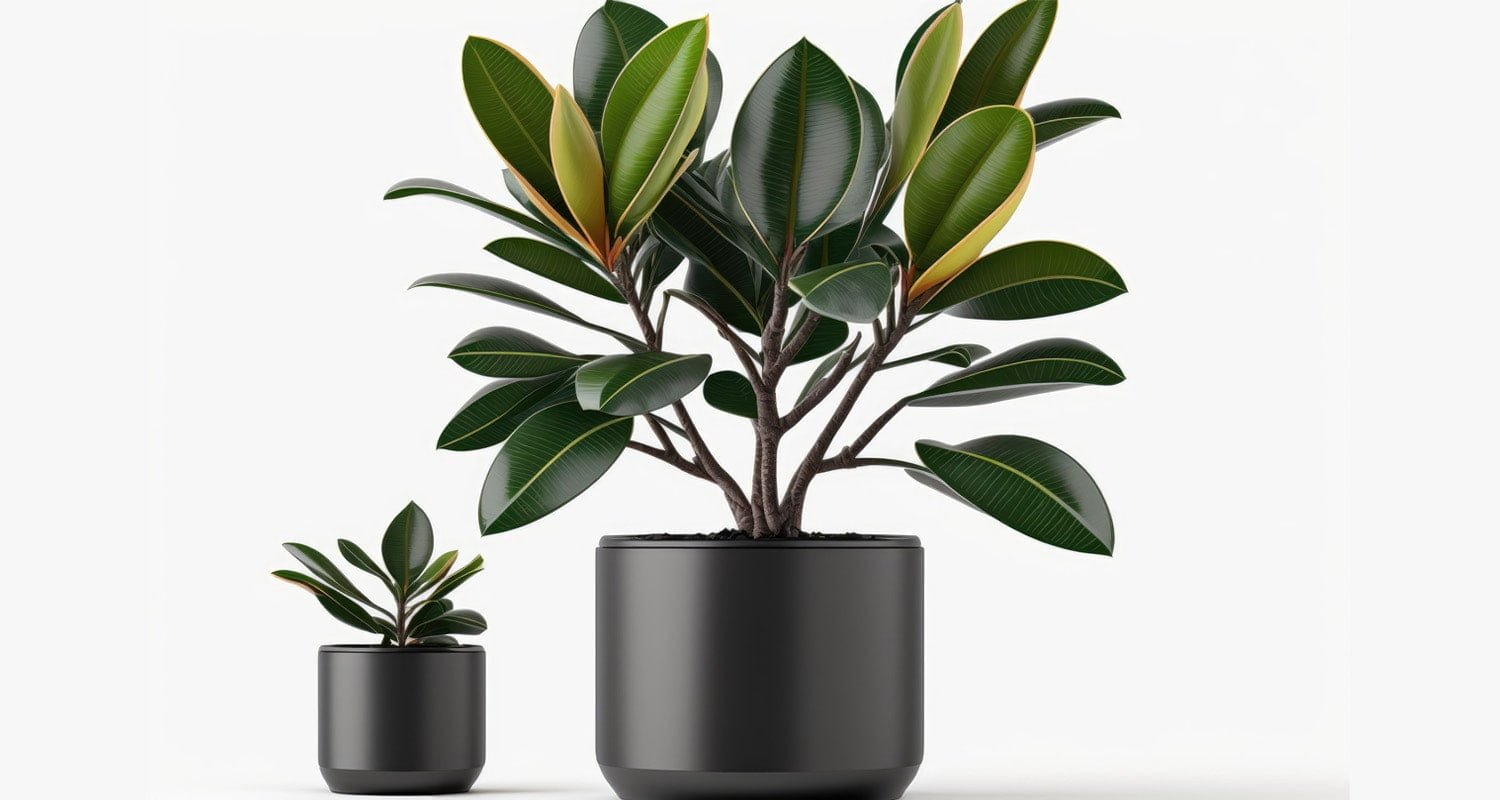


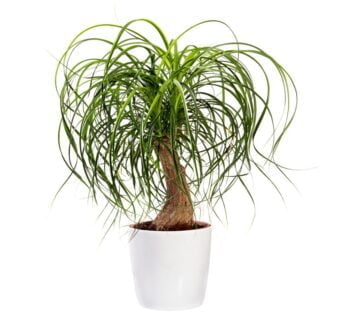
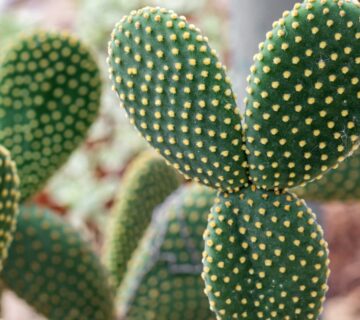
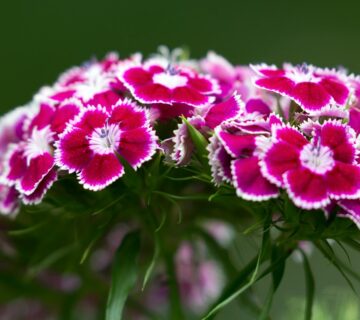
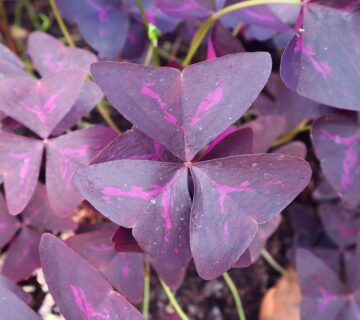


No comment